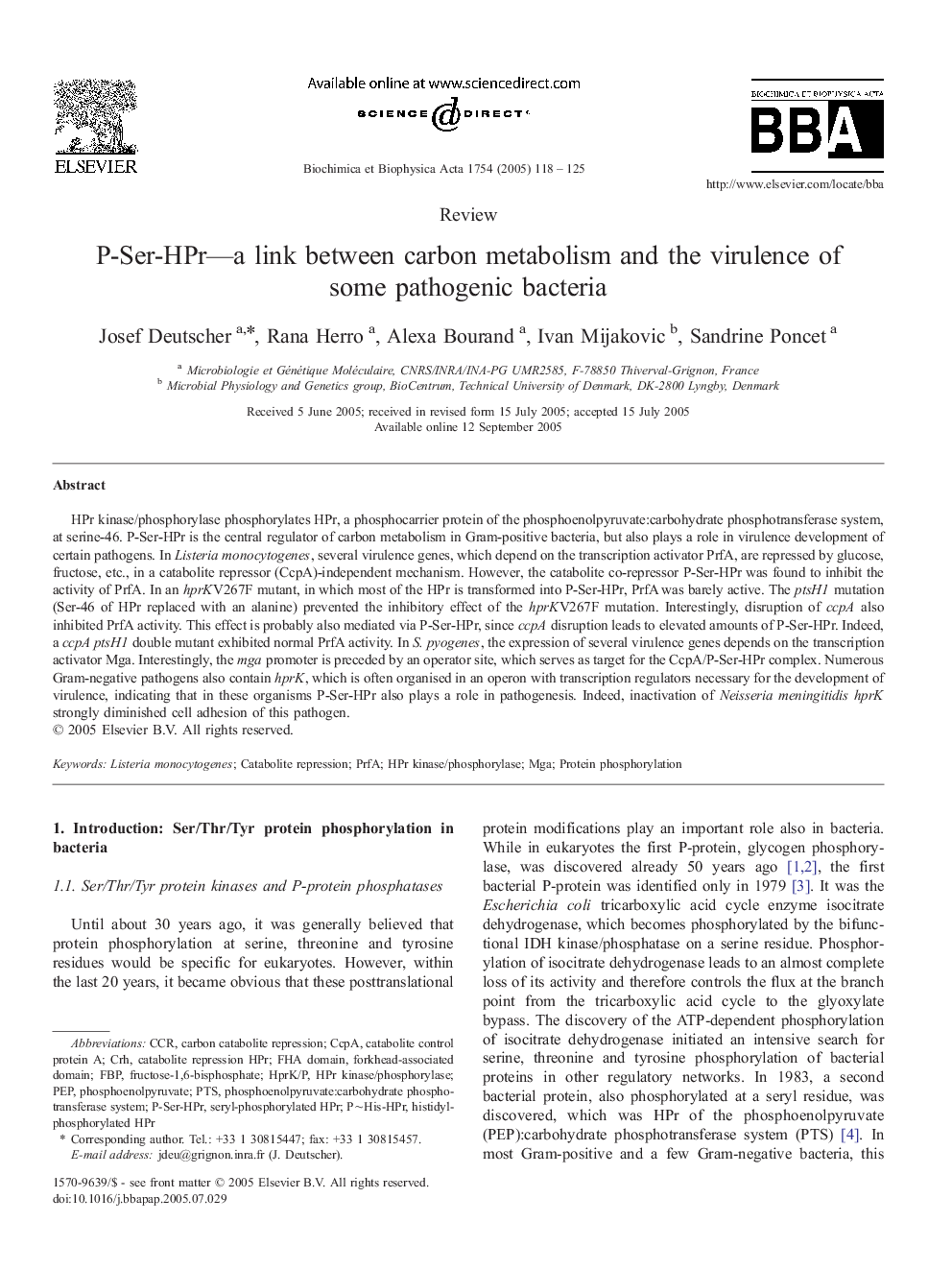| Article ID | Journal | Published Year | Pages | File Type |
|---|---|---|---|---|
| 9745078 | Biochimica et Biophysica Acta (BBA) - Proteins and Proteomics | 2005 | 8 Pages |
Abstract
HPr kinase/phosphorylase phosphorylates HPr, a phosphocarrier protein of the phosphoenolpyruvate:carbohydrate phosphotransferase system, at serine-46. P-Ser-HPr is the central regulator of carbon metabolism in Gram-positive bacteria, but also plays a role in virulence development of certain pathogens. In Listeria monocytogenes, several virulence genes, which depend on the transcription activator PrfA, are repressed by glucose, fructose, etc., in a catabolite repressor (CcpA)-independent mechanism. However, the catabolite co-repressor P-Ser-HPr was found to inhibit the activity of PrfA. In an hprKV267F mutant, in which most of the HPr is transformed into P-Ser-HPr, PrfA was barely active. The ptsH1 mutation (Ser-46 of HPr replaced with an alanine) prevented the inhibitory effect of the hprKV267F mutation. Interestingly, disruption of ccpA also inhibited PrfA activity. This effect is probably also mediated via P-Ser-HPr, since ccpA disruption leads to elevated amounts of P-Ser-HPr. Indeed, a ccpA ptsH1 double mutant exhibited normal PrfA activity. In S. pyogenes, the expression of several virulence genes depends on the transcription activator Mga. Interestingly, the mga promoter is preceded by an operator site, which serves as target for the CcpA/P-Ser-HPr complex. Numerous Gram-negative pathogens also contain hprK, which is often organised in an operon with transcription regulators necessary for the development of virulence, indicating that in these organisms P-Ser-HPr also plays a role in pathogenesis. Indeed, inactivation of Neisseria meningitidis hprK strongly diminished cell adhesion of this pathogen.
Keywords
Related Topics
Physical Sciences and Engineering
Chemistry
Analytical Chemistry
Authors
Josef Deutscher, Rana Herro, Alexa Bourand, Ivan Mijakovic, Sandrine Poncet,
